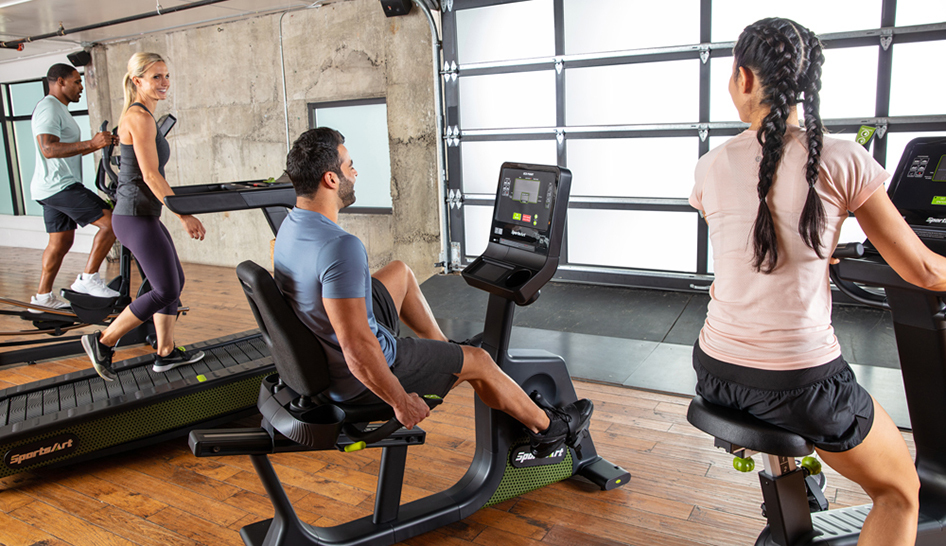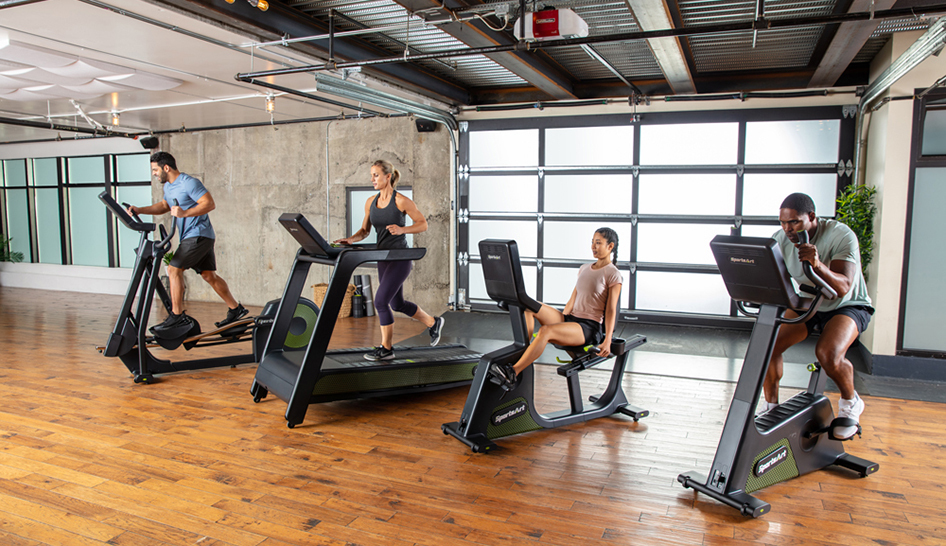“SportsArt builds 95% of our products, and the components that make up those products, in our ISO-14001 factory, which means they are built in a green environment using solar power,” Mejia says. “Additionally, our production process incorporates many innovations that reduce the impact of each individual product on the environment.” (ISO-14001 is a manufacturing standard that sets out the criteria for a certified environmental management system.)
SportsArt equipment is also produced using recycled plastic wherever applicable; the packaging process minimizes the space needed for shipping, reducing the transportation impact; and any paper products in its packaging materials are composed of 70% post-consumer recycled paper.
Leading a Green Evolution in Fitness
“Over time, we have infused our commitment to environmental stewardship into our products, starting with our innovative ECO-DRIVE motors and eventually into the creation of our ECO-POWR technology, which turns human energy exerted through workouts into clean renewable electricity,” says Mejia. “We are now on our third iteration of the ECO-POWR technology and have developed equipment that is as simple as ‘plug and play,’ with all the eco-friendly technology built into the products.”
In 2018, SportsArt debuted its latest version of Status ECO-POWR line of equipment, which combined sustainable technology with a modern design. The line, featuring treadmill, cross-trainer, elliptical machines and upright, recumbent, and indoor cycles, was the most extensive expression of its sustainability philosophy. The watts generated through member exercise are converted to AC power and, through micro-converter technology, sent back to facilities’ power grids to offset energy consumption.
Next up for SportsArt is its Elite line.
Mejia doesn’t want to give too much up right now, but says that the line, “Incorporates our ECO-POWR technology and sustainable philosophy into a fresh design. Our goal with the line is to make our energy-producing equipment a reality for more facilities, across different markets.”
To learn more about SportsArt and the Elite line, visit their website.

